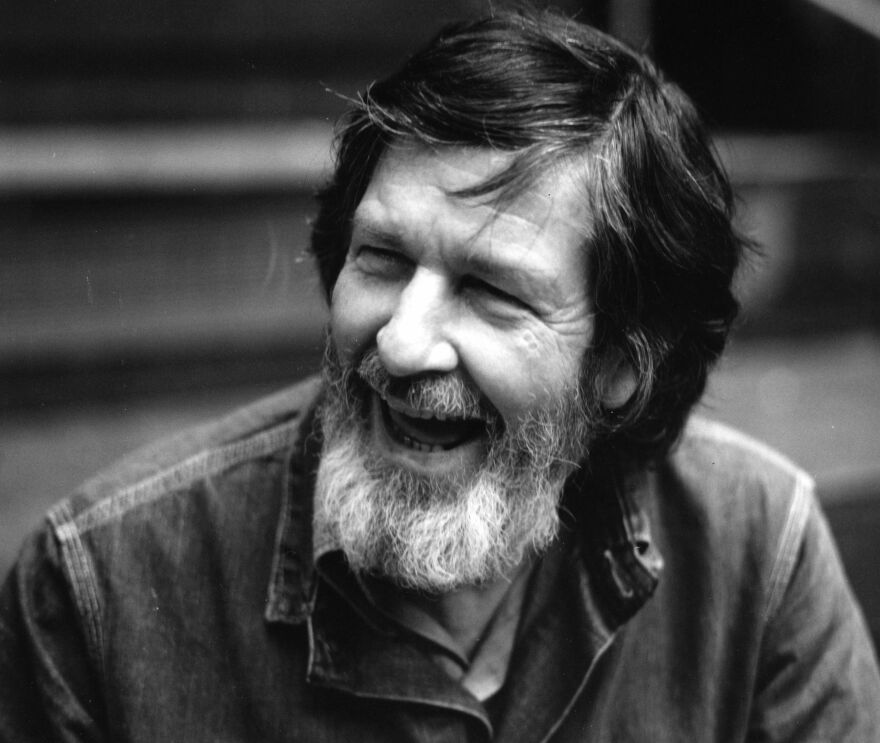HALBERSTADT, Germany — Before American avant-garde composer John Cage died in 1992, one of the only instructions he left for those performing his piece Organ2/ASLSP (As Slow as Possible) was, as its title suggests, to play the piece as slowly as possible.
One might say "mission accomplished" for the folks with the John Cage Organ Foundation in Halberstadt, a small city in central Germany known as the gateway to the Harz mountains. But the group itself may disagree, and it wouldn't be the first time.
When the collection of music scholars, art professors and theologians came together in the late 1990s to plan the slowest performance possible of the piece, they differed among themselves on what Cage meant with his timing instructions.
"And they said, 'Oh, the organist must sometimes go to the loo or sometimes to eat,'" recalls foundation member Rainer Neugebauer. "And then one person — he was a theologian — said, 'No, the organist must play until he dies from the seat.' "

The theologian's idea lost traction when the group realized it might be difficult to find an organist willing to die while playing a John Cage composition, so they came up with a simpler solution: small sandbags to hold the keys down.
After further debate, the group decided the piece would be played for 639 years, to mark the time between the construction of the world's first 12-tone Gothic organ in Halberstadt, in 1361 CE, and the new millennium. The city donated an abandoned 11th century convent for the performance, and on Sept. 5, 2001, what would have been Cage's 89th birthday, the performance began.
"Thousands of mistakes" and patience as Cage's work unfolds
The wooden-framed organ that has played the composition since then is a work in progress; it's being built as the piece progresses, with metal pipes added or taken away with each chord change.
Its bellows, lying across the convent's main hall from the organ on a raised platform, are powered electrically (with a backup generator), the wind from them carried to the organ through an underground pipe.
Sporting a long gray beard and black-framed glasses, 70-year-old Neugebauer beckons toward them. "In the beginning of the first part, for 17 months, you came in here and heard only the bellows," he says.

That's because Cage's piece starts with a short pause that, when calibrated to fit 639 years, meant the first 17 months of the piece was the sound of air whooshing through the bellows.
Years later, however, Neugebauer realized with shock that his team had miscalculated this pause — and that it should have lasted 28 months. The 639-year project had begun with a mistake.
"We've made thousands of mistakes," Neugebauer says, laughing.
For example, there was the time he allowed a movie crew to film the organ at night and the crew accidentally knocked one of the pipes loose, changing the note for a few hours. Or the time when a local politician couldn't make one of the chord-change ceremonies, so they delayed it by a couple of weeks — a delay that proved to be the final straw for one of the project founders, who fancied himself a Cage purist and who had had enough. He quit in a huff.
Neugebauer takes it all in stride. "I'm 99% sure that John Cage, if he's sitting on a cloud somewhere, would say, 'Oh it's good,' and he would laugh about the mistakes we've made," Neugebauer says.

After all, says Neugebauer, we're talking about a composer whose most famous composition, 4'33", asks performers to sit silently for four minutes and 33 seconds.
"I think Cage was one of these human beings who was nearest the point to be so free that he was not disappointed when there is no meaning, no intention," Neugebauer concludes.
On a quiet, windy winter day, visitor Gabriella Faust stands in front of the organ and closes her eyes, almost in meditation. "There's something contemplative about this sound," she says. "It's relaxing and calming."
Faust wonders, though, how this piece will continue until the year 2640. "Who's going to take care of this organ?" she asks.

Neugebauer goes over a list of future threats to the performance: right-wing extremists, climate change, nuclear war, the end of humankind, etc.
But those concerns are for future generations, Neugebauer says. He's only in charge of the first of the piece's eight movements, scheduled to wrap up on Sept. 4, 2072.
If he's calculated it correctly.
Esme Nicholson contributed reporting.
Copyright 2024 NPR. To see more, visit https://www.npr.org.



